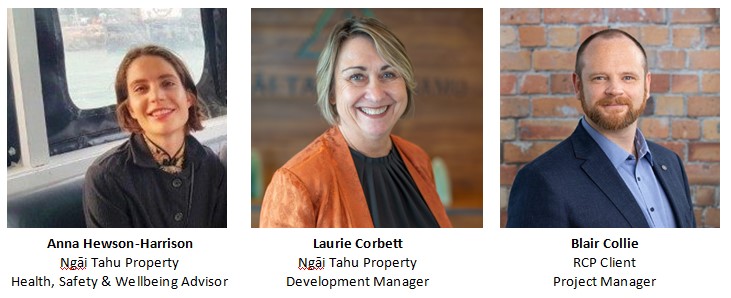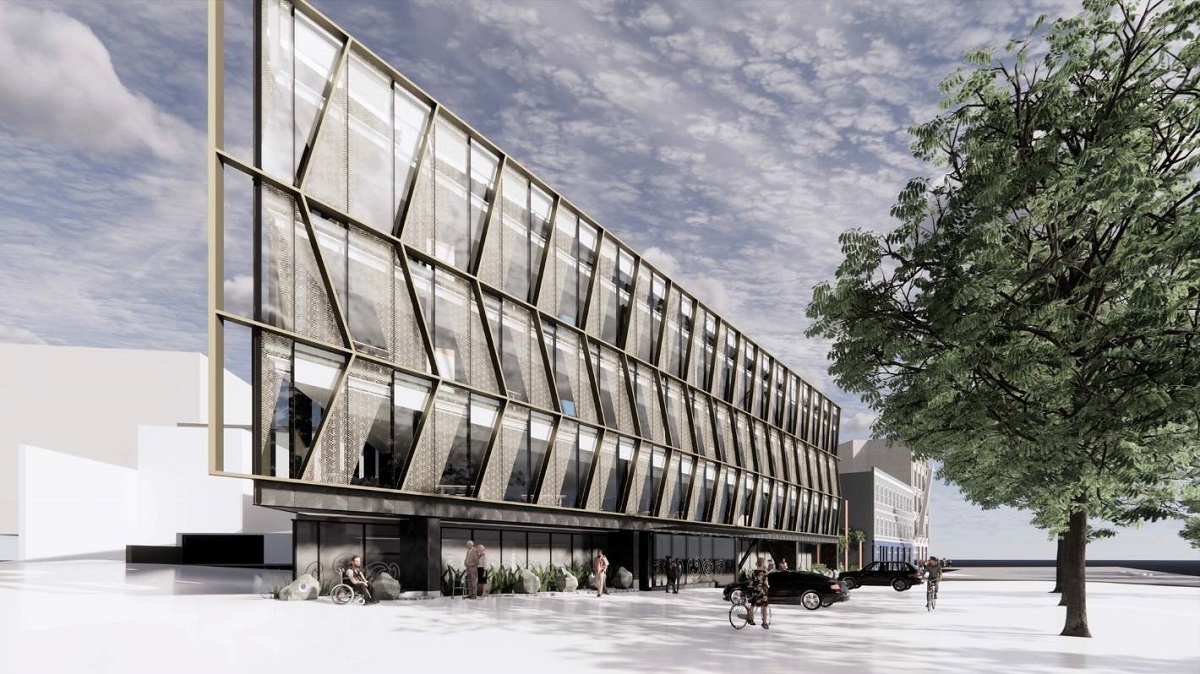Organisational Profile
Te Rūnanga o Ngāi Tahu is the largest of the South Island iwi, made up of eighteen Papatipu Rūnanga from across Te Waipounamu. The Te Rūnanga Group (TRG) is responsible for managing the needs of the iwi, with Ngāi Tahu Holdings (NTH), the operational arm of TRG, existing to create wealth and protect the pūtea for future generations. NTH is made up of five operational Business Units.
Ngāi Tahu Property is the direct property and development business of Ngāi Tahu Holdings, providing both stable and growth returns from our portfolios.

1. Why is Ngāi Tahu Property keen to be involved in the BIMSafe NZ project?
Use of BIMSafe is a natural trajectory for Ngāi Tahu Property as we are guided by our whakataukī – Kia hoki atu tātau katoa ki te Kāika, this translates to ’everyone home safe and well’. We work within a dynamic and changing industry and wider environment. Unrecognised changes are a consistent theme emerging from industry and internal reviews and unfortunately the impact of these changes on job safety are not always obvious. Use of BIMSafe enables its users to realign in real time and to deliver on safety values as well as providing peace of mind that safety is a well-functioning component in the delivery of projects, such as NTP’s Ōtepoti project.
Kia ora ko Anna tōku ingoa. We are working through an interesting time in which there are challenges to the more typical approaches to risk management. At Ngāi Tahu Property, we have a focus on Tāraia (delivering excellence) using safety technology to engage kaimahi (staff), kaikirimana (contractors) and stakeholders. At our organisation we are always open to innovation and going further than just achieving the bottom line. I’ve found our involvement with BIMSafe rewarding – this mahi contributes to advancing current skills and learnings both for NTP and within my own professional journey.
Reducing injuries via 3D modelling and enabling the capability through BIMSafe to pre-empt and assist with risk management is a very interesting venture for me and also is an important aspect to mahi kotahitanga for the wider industry.
2. Tell us about the Case Study Project in Dunedin?
Anna: Our Ngāi Tahu Property team is happy to explore digital solutions as in the BIMSafe project. The risk management (admin burden) paradigm has changed significantly within the digital engineering and modelling space. I am happy to be working in this space – and that we can enable the Ngāi Tahu Property and ACC joint venture development in Ōtepoti as a case study project.
Laurie: ACC Ōtepoti is a four-level office building on an irregular shaped site between Dowling St in Ōtepoti. The building has been designed to maximise the area available. The design includes a glass and aluminium façade facing out to two streets.
As this building is surrounded by heritage buildings, visual cues from Victorian and Edwardian heritage have been expressed in a simpler and more modern fashion. The colours chosen have also been in line with heritage neutral colours. Traditional steel and concrete structure elements are included in the design with cross laminated stairs as the central stairwell leading to a generally open-plan floor layout.
Street furniture and landscaping is located at the entry, while off street parking is included under the building and is not visible from the street.
As a Joint Venture (ACC and NTP) we are keen to see the outworkings and emphasis on getting more kaimahi (staff) engaged in identifying and managing risks and getting BIM technologies developed in a way that encourages engagement more widely, from architects to subcontractors. We see this to be a critical factor for success – designing the product to get wider application and buy-in through the contractor chain.
3. What do you see as the benefits/advantages of this Project for the construction industry?
Anna: That is an interesting question. The demographic of this country’s construction workforce is diverse and spans vastly different literacy levels, ages, and nationalities.
In a constructability context – the modelling will be a key enabler and provide necessary learnings towards the bigger picture approach. It also provides an ability to troubleshoot (up the chain), and workshop matters with project teams while focusing on both critical and routine risks as industry projects progress. Any system relies on buy in and consistency from all peoples within the team throughout all aspects of the program and we at NTP are looking forward to supporting the BIMSafe project.
BIMSafe can provide opportunities for greater engagement with key people prior to construction, as well as facilitating opportunities to forward plan on all aspects of a project.
The use of the BIM modelling can make it easier to planning safe work on the ground before exposing workers to any risk. Workers can also collaborate in the design of the safe work methodology of their specific work tasks.
We hope this will enhance all stakeholders’ awareness of risks by using the visual media, and of being able to understand complex work situations.
4. What changes have you seen in Construction in NZ regarding the use of BIM over the last 10 years
BIM has been in use previously within NTP, and we look forward to developing our capability further in this space.
Blair: The adoption of BIM in construction over the last 10 years has been exponential and software developers are continuously providing updates to be competitive in the market. These updates transfer through to the software and hardware to facilitate construction on site. Contractors are always looking for a way to mitigate programme and cost, and BIM has not only provided savings in these areas but having end-to-end solutions in BIM has helped to provide clarity over the whole lifecycle of the project.
5. What is the future of BIM in construction in NZ for the near future
Blair: Contractors will always be looking for ways to be more efficient and get onto the next project as quickly as possible, and investment in BIM is one way to achieve this. Because of this, developers are proactively working towards ways to enhance the user experience and improve functionality to not only the contractors main ‘building’ function but also such things like material delivery, IOT sensors, staff sign in / hazard identification etc. Many of New Zealand’s Tier 1 contractors are using BIM tools through construction and they will continue to implement and develop efficiencies. Over the next five years I would also expect to see more of the Tier 2 & 3 contractors/subcontractors adopting BIM practices.

